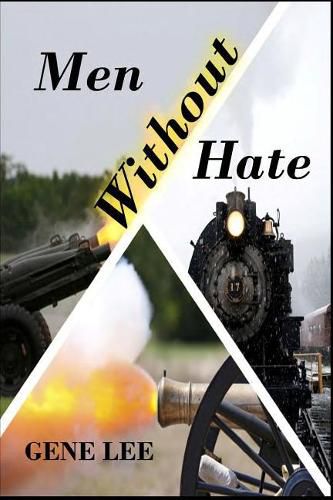Readings Newsletter
Become a Readings Member to make your shopping experience even easier.
Sign in or sign up for free!
You’re not far away from qualifying for FREE standard shipping within Australia
You’ve qualified for FREE standard shipping within Australia
The cart is loading…






In 1861, twenty-two-year old Lewis Raines is coming of age on the family farm in Ware County, Georgia just as the Civil War breaks out. Deciding that fighting for a good cause is preferable to a dull future farming and marrying the preacher’s daughter, Lewis enlists. It is 1863 and Lewis’s battery is preparing to fight in what will become known as Pickett’s Charge. Lewis tries to send word to headquarters of the danger he sees but is too late. He can only watch in horror as Pickett’s men begin across the valley, toward the Federal positions and certain death.The surviving forces retreat, and Lee eventually surrenders, but for Lewis the searing memories of chaos and death make it a long time before he returns home, changed forever. In the second half of the novel, the narrative shifts to 1935 and the life of Hilton Raines, Lewis’s grandson. Raised by a man scarred by his own father’s coldness, Hilton has enjoyed a warm, stable, and comfortable boyhood. World War II begins while Hilton is at college. At his father’s urging he graduates but puts off law school to enlist in the Army Infantry in 1943. He forms a tight war-time bond with his commanding sergeant, Ray Jesup, during the invasion of Leyte. After fighting its way through the jungles of the Philippines, their howitzer unit, The Guns of Dixie, supports the attack on Manila. Japanese are vanquished after three weeks of fighting, but when Hilton and Jesup visit the ruins of the sacred walled city the day after the final battle, Hilton is unprepared for what he sees and the long lasting effects of war. The story of Lewis and Hilton Raines juxtaposes two quintessentially American coming-of-age tales-and two iconic American wars, the Civil War and World War II-with a nuanced meditation on the nature of family legacy, healing, and survival. With troops now returning from America’s latest military engagements, the novel’s central question-how do some men’s souls survive the horror of war while others’ minds are destroyed by it? -has both timeliness and emotional resonance.
$9.00 standard shipping within Australia
FREE standard shipping within Australia for orders over $100.00
Express & International shipping calculated at checkout
In 1861, twenty-two-year old Lewis Raines is coming of age on the family farm in Ware County, Georgia just as the Civil War breaks out. Deciding that fighting for a good cause is preferable to a dull future farming and marrying the preacher’s daughter, Lewis enlists. It is 1863 and Lewis’s battery is preparing to fight in what will become known as Pickett’s Charge. Lewis tries to send word to headquarters of the danger he sees but is too late. He can only watch in horror as Pickett’s men begin across the valley, toward the Federal positions and certain death.The surviving forces retreat, and Lee eventually surrenders, but for Lewis the searing memories of chaos and death make it a long time before he returns home, changed forever. In the second half of the novel, the narrative shifts to 1935 and the life of Hilton Raines, Lewis’s grandson. Raised by a man scarred by his own father’s coldness, Hilton has enjoyed a warm, stable, and comfortable boyhood. World War II begins while Hilton is at college. At his father’s urging he graduates but puts off law school to enlist in the Army Infantry in 1943. He forms a tight war-time bond with his commanding sergeant, Ray Jesup, during the invasion of Leyte. After fighting its way through the jungles of the Philippines, their howitzer unit, The Guns of Dixie, supports the attack on Manila. Japanese are vanquished after three weeks of fighting, but when Hilton and Jesup visit the ruins of the sacred walled city the day after the final battle, Hilton is unprepared for what he sees and the long lasting effects of war. The story of Lewis and Hilton Raines juxtaposes two quintessentially American coming-of-age tales-and two iconic American wars, the Civil War and World War II-with a nuanced meditation on the nature of family legacy, healing, and survival. With troops now returning from America’s latest military engagements, the novel’s central question-how do some men’s souls survive the horror of war while others’ minds are destroyed by it? -has both timeliness and emotional resonance.